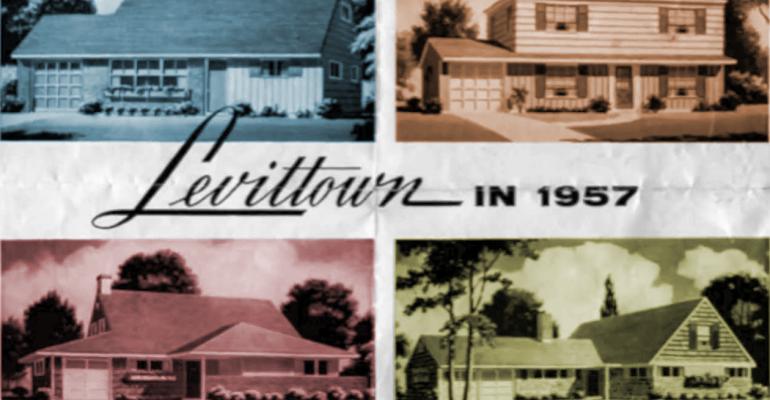Anniversaries of seminal events are always good material for analysis, and this is a convenient time to pause and remember what happened 70 years ago, with the “invention” of the suburbs.
U.S. Navy lieutenant Bill Levitt had just returned from World War II to rejoin his father and brother in their home-building enterprise on Long Island, N.Y. With the war over, it was a critical time for America, facing a severe housing shortage and the need to provide homes for what the Journal of American History estimated at more than 12 million men and women still in uniform, 7.6 million of whom were overseas.
Levitt seized the moment, envisioning a new kind of mass-produced housing model that eventually created thousands of affordable houses in multiple planned communities throughout the Eastern U.S., dubbed “Levittowns.” He went on to become a real estate icon whom the editors of Life magazine named one of the "100 Most Important Americans of the 20th Century."
It’s worth recalling those long-ago days because in many ways we’re once again at a turning point in the housing industry. Single-family and multifamily housing stock has lagged behind household growth in many markets, and the home ownership rate—at 63.8 percent as of 2015’s fourth quarter—is still below historical averages, according to the U.S. Census Bureau.
It’s expected that new housing will be spurred by Millennials buying their first homes, baby boomers downsizing or retiring to new ones, and the perceived need for more affordable housing, according to PwC’s and the Urban Land Institute’s Emerging Trends in Real Estate 2016.
I wouldn’t be surprised if the housing innovations arising today aren’t just as ground-breaking as what Bill Levitt spearheaded years ago. These and other similarities, drawn from the seminal year 1946, may provide valuable considerations for today’s forward-thinking real estate professionals and investors.
Before the war, Levitt and his family had done well, building small subdivisions mainly for upscale home buyers on the outskirts of Manhattan. Levitt’s own work with the war-time Seabees construction units, developing war workers’ homes in Virginia, Hawaii and elsewhere, honed the Levitts’ ability to mass produce homes, according to Kenneth T. Jackson’s “Crabgrass Frontier: The Suburbanization of the United States.”
Also, as documented in Herbert J. Gans’ “The Leittowners: Ways of Life and Politics in a New Suburban Community,” trucks delivered materials for each new home at precisely 60-foot intervals. There was a concrete slab, with plywood and rock board predominating. Workers were given specialized tasks, and the whole shebang was divided into 27 separate steps, from pouring foundations to sweeping up dust. Labor costs were thus reduced by up to 40 percent.
At its height, Levitt was building one new home every 16 minutes. Initially only offered as rentals at $60 per month, the first 1,800 homes were snapped up via options to buy at less than $8,000, thanks to the GI Bill.
It’s worth noting that none of this happened without controversy and heartbreak. David Kusher, in his book “Levittown: Two Families, One Tycoon, and The Fight for Civil Rights in America’s Legendary Suburb,” recounts how African-Americans were redlined out of the various Levittowns, a situation that persists, even if sub rosa, to this day.
Bill Levitt died in 1994 at the age of 86. Once one of the richest men in America, his latter-day ventures drained his fortune, and he was close to bankruptcy due to failed investments, and for trying to achieve new successes based on old models. But Levitt’s reputation is secure in recognizing opportunities, and creating new paradigms for residential development.
Today, we may be on the brink of similar opportunities, which include suburban housing in new forms, metro units that cater to a new aesthetic of close-in living near mass transit and housing that includes mixed-use and entertainment. Meanwhile, watch out for striving Millennials and retiring boomers making their own plans for the future, which will inspire new innovations not dissimilar to Bill Levitt’s own enterprising vision.
Today’s development community is exhibiting resilience in finding appropriate and relevant housing solutions in our cities and our suburbs. From new innovations in manufactured and modular housing, to increased density in our cities, intergenerational housing and college residences, our industry continues to recognize and seize new opportunities of its own.
 R. Byron Carlock Jr. is a principal and the national real estate practice leader at PricewaterhouseCoopers. He can be reached at [email protected].
R. Byron Carlock Jr. is a principal and the national real estate practice leader at PricewaterhouseCoopers. He can be reached at [email protected].

